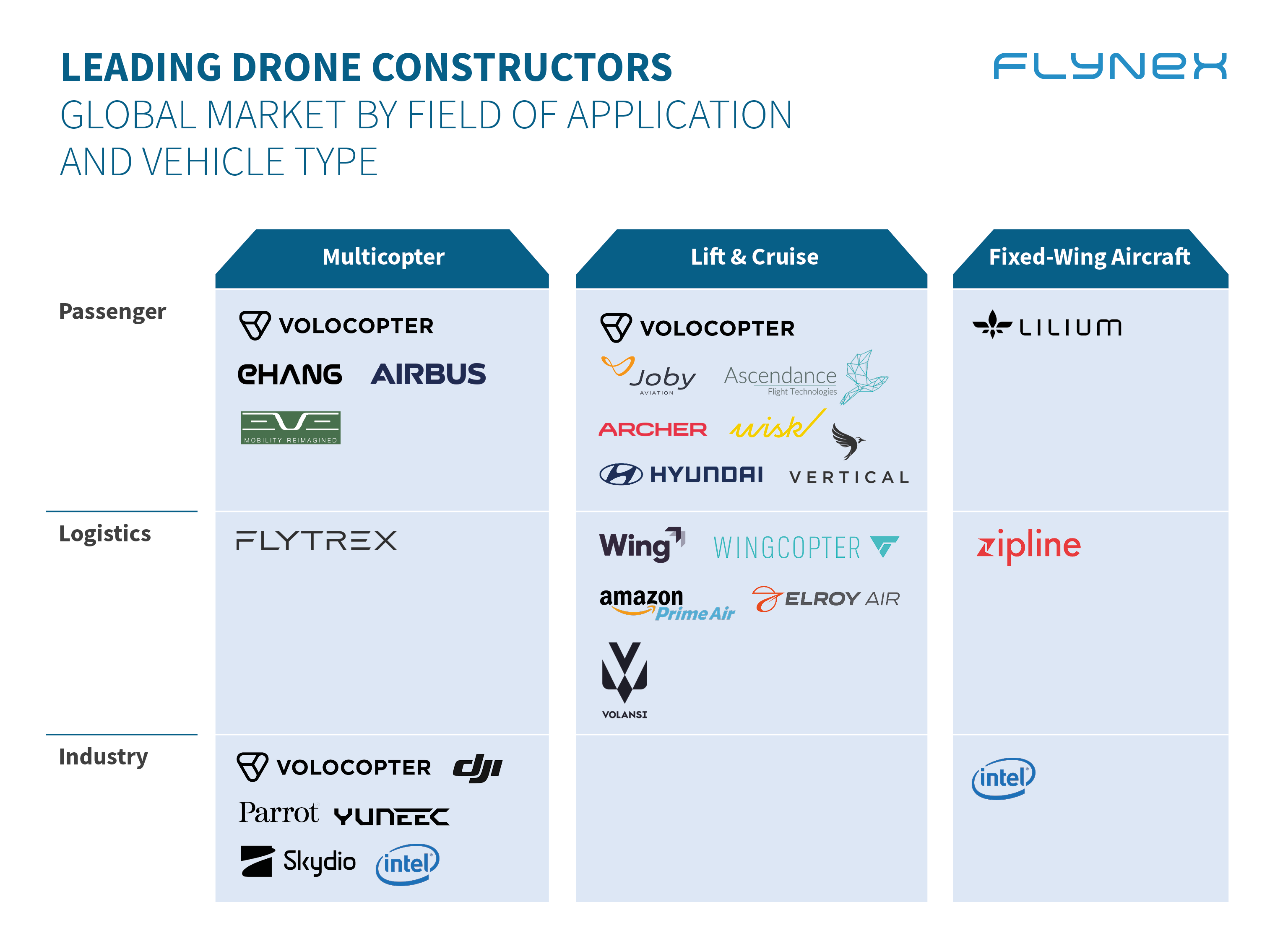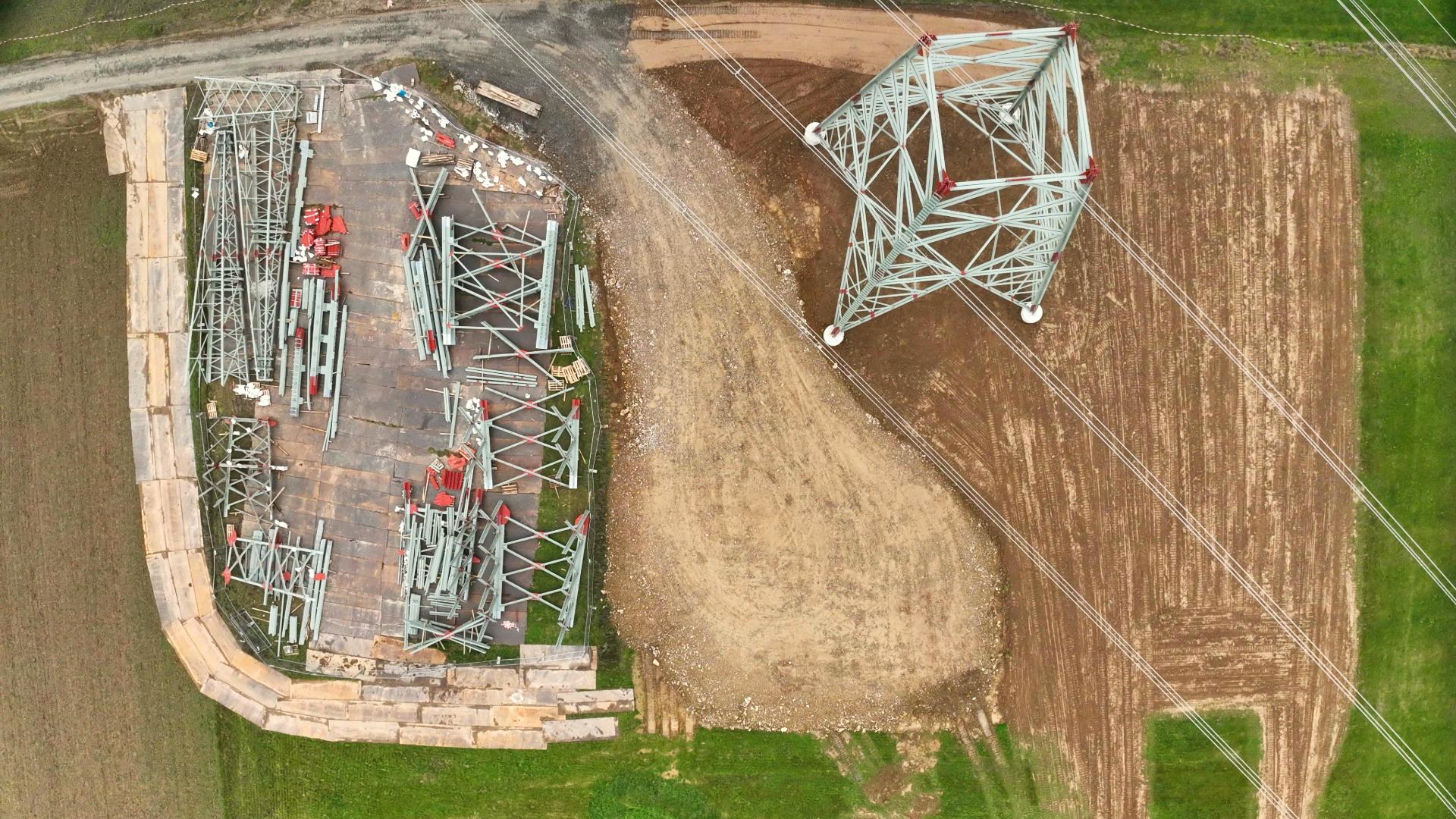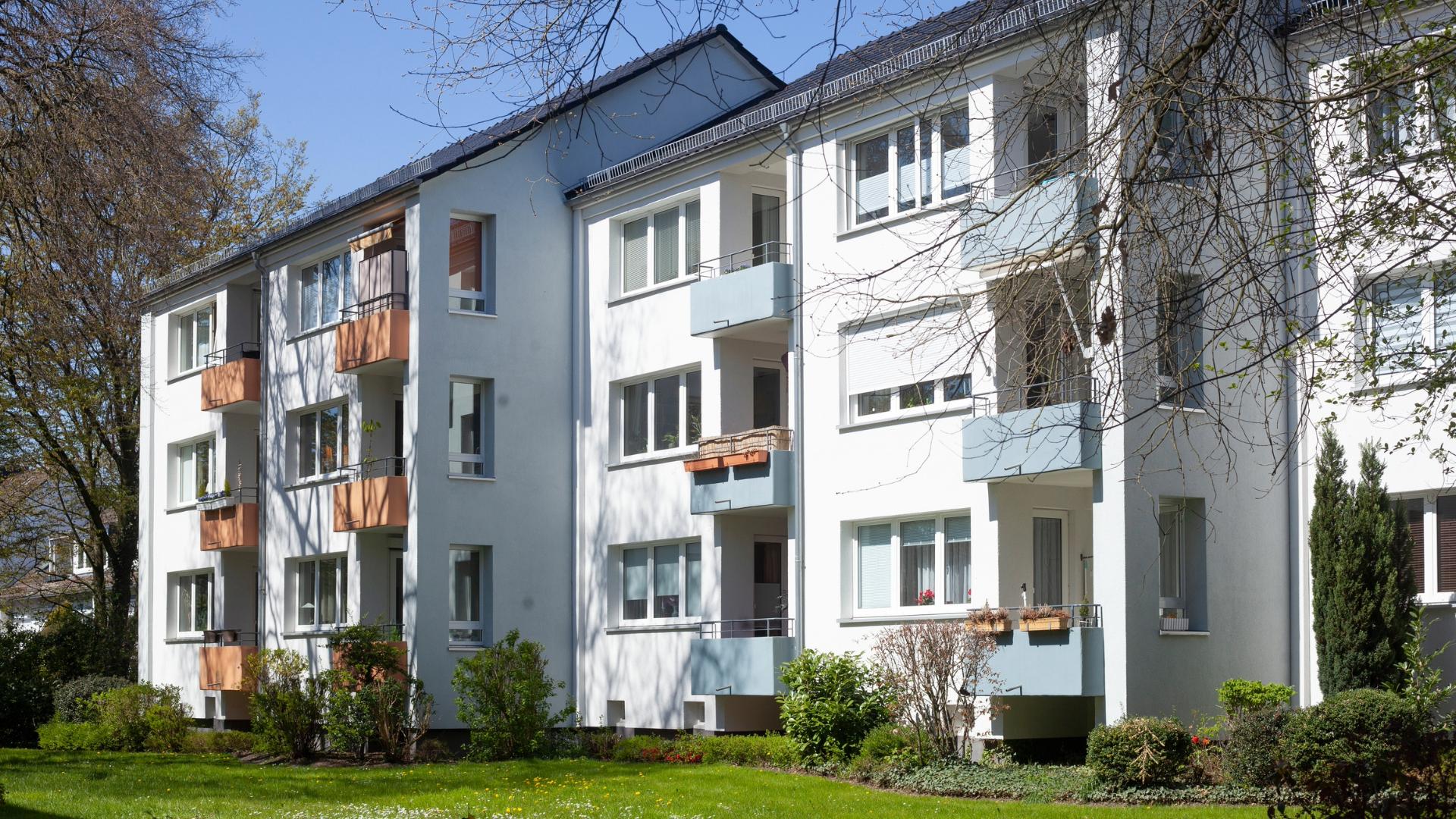The market for unmanned aerial vehicles is in a state of flux. In FlyNex’s latest market study, a new picture emerges where the journey is headed for air cabs, transport drones, and industrial UAVs. The development of the commercial sector, in particular, deserves more attention than ever before. Since the advanced technology and economics of UAVs have improved significantly over the past 24 months, the industrial drone market is booming.
In Germany, a total of more than 430,000 drones are in use. Of these, 90 % are for private use alone. Even though the number of drones flown commercially is still small at around 45,000, these account for a full 88 % of the drone market at €738 million. Thus, Germany’s commercial drone market is in fourth place in an international comparison after the USA, China, and Japan. In a European comparison, it is even the first place. (Source: BDL, as of March 2021)
It can therefore be seen that there is enormous potential in the commercial drone market. As a result, there are also more and more drone manufacturers building drones specifically for commercial use. Essentially, three major application springs of unmanned aerial vehicles can be defined:
a) Passenger: Individual transport with unmanned aerial cabs is probably the most prestigious application area. However, the passenger segment is also the field with the lowest degree of maturity. Currently, there is no provider in Europe with a fully unmanned operating license for inner-city air cabs. The devices from many providers are currently still in a testing and development stage.
b) Logistics: Industrial logistics solutions with unmanned aerial vehicles are also currently experiencing growing attention. Nevertheless, as a rule, operators are still in pilot projects and testing phases. The last mile business, mainly characterized by the players Amazon and UPS, is trying to develop scalable solutions here.
c) Industry: The area with the highest degree of maturity is just as diversified as it is technologically demanding. Agricultural, Construction, Medical, Energy – Many verticals are now using drones for transportation, inspection, documentation, and surveying use cases.
Drone manufacturers – Who are the market leaders?
The largest manufacturer of commercial drones worldwide is DJI. The Chinese market giant generates annual sales of over $2.8 billion (as of 2017). With various multicopters, DJI serves the drone market not only on a professional level, but DJI drones are also by far the most popular in the private sector. However, a look at other application areas reveals other companies that we will surely hear more about in the coming years.
In the following chart, we’ve picked up the biggest manufacturers and categorized them by device type and field of application.

Vehicle Type
Field of Application
How will the market develop in the future?
Although most drones are currently hobby devices, the declining market development (-14.5 %) shows that saturation will occur in a few years. Meanwhile, the absolute number of semi-professional and professional devices for commercial use cases is growing.
The commercial market will continue to grow rapidly. BDL expects the market to grow at an average rate of 16.1 %, which represents a market value increase of €1.5 billion by 2025. The number of drones in commercial use is expected to reach 132,000 by 2025. This is an increase of 200 % compared to today. This then means that every third drone will be in commercial use from 2025. The professionalization of the technology and thus the supply is a key factor for further market development.
We wish you further safe flights,
Your FlyNex Team




